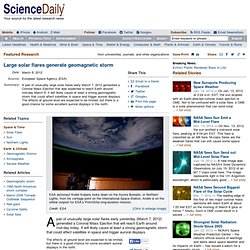

Jóvenes científicos crearon el primer robot lunar chileno - 24 HORAS TVN 2012. 'Water Bears' Able To Survive Exposure To Vacuum Of Space. Of all environments, space must be the most hostile: It is freezing cold, close to absolute zero, there is a vacuum, so no oxygen, and the amount of lethal radiation from stars is very high. This is why humans need to be carefully protected when they enter this environment. New research by Ingemar Jönsson and colleagues published in the September 9 issue of Current Biology, a Cell Press journal, shows that some animals —the so-called tardigrades or 'water-bears'— are able to do away with space suits and can survive exposure to open-space vacuum, cold and radiation. This is the first time that any animal has been tested for survival under open-space conditions.
The test subjects were chosen with great care: Tardigrades —also known as water-bears— are tiny invertebrate animals from 0.1 to 1.5mm in size that can be easily found on wet lichens and mosses. Because their homes often fall dry, tardigrades are very resistant to drying out and can resurrect after years of dryness.
Large solar flares generate geomagnetic storm. A pair of unusually large solar flares early yesterday (March 7, 2012) generated a Coronal Mass Ejection that will reach Earth around mid-day today.

It will likely cause at least a strong geomagnetic storm that could affect satellites in space and trigger auroral displays. The effects at ground level are expected to be limited, but there is a good chance for some excellent auroral displays in the north. The extra-large two solar flares occurred at 23:24 GMT on 6 March and 00:14 GMT March 7, throwing off a huge cloud of magnetised plasma from the Sun's atmosphere -- the corona -- into interplanetary space. These Coronal Mass Ejections (CMEs) often occur in association with a solar flare. Dramatic events spotted by ESA and NASA missions These dramatic events were detected by the ESA/NASA SOHO and NASA SDO spaceborne solar observatories. The two flares followed an earlier flare, which occurred on 04:05 GMT on 5 March.
The plasma cloud left the Sun at an estimated 2300 km/s -- unusually fast. Www.solarsystemscope.com/scope.swf. Asteroid mining. Artist's concept of asteroid mining Asteroid mining is the exploitation of raw materials from asteroids and other minor planets, including near-Earth objects.[1] Minerals and volatiles could be mined from an asteroid or spent comet then used in space for in-situ utilization (e.g. construction materials and rocket propellant) or taken back to Earth.

These include gold, iridium, silver, osmium, palladium, platinum, rhenium, rhodium, ruthenium and tungsten for transport back to Earth; and iron, cobalt, manganese, molybdenum, nickel, aluminium and titanium for construction, water, and oxygen to sustain astronauts, as well as hydrogen, ammonia, and oxygen for use as rocket propellant. Purpose[edit] In 2006, the Keck Observatory announced that the binary Jupiter trojan 617 Patroclus,[12] and possibly large numbers of other Jupiter trojans, are likely extinct comets and consist largely of water ice. Asteroid selection[edit] Asteroid cataloging[edit] Mining considerations[edit] Surface mining[edit]